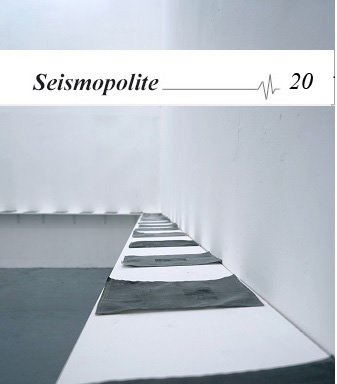-
A Loud Silence: An Interview with Tada Hengsapkul on Art and Democracy in Thailand Today
BY ROGER NELSON. In 2017, Tada held two solo exhibitions in Thailand. The first, at Chiang Mai’s Gallery Seescape, was titled The Things That Take Us Apart, and centred on playful and theatrical video images of a group of strangers dancing, often naked, in a moment of hedonistic escape from the increasingly restricted experience of daily life since the 2014 coup d’etat, which reinstated military rule in the officially democratic Southeast Asian nation. -
Art, the uncontainable other in contemporary detention camps.
BY RENATA SUMMO-O'CONNELL. In Australia, refugees’ confinement locations have been pushed beyond the boundaries of the actual mainland, placing refugees in Christmas Island (Australian territory), Manus Island (Papua New Guinea) and Nauru (an independent state in Central Pacific). These Pacific islands have been theatres of an all too real tragedy investing the lives of mainly young families and young individuals who escaped some of the harshest oppressive regimes, from Iran to Myanmar, from Iraq to Kurdish oppressed enclaves, only to end up confined in Australian asylum seekers detention centres. -
(De-)colonizing Don Quixote in its Context: Censorship and Visual Manipulation in Central Spain
BY SANTIAGO G. VILLAJOS. (De)colonising Don Quixote in its Context' was registered as a curatorial project of public mural art at the Reina Sofía Museum, Madrid in June 2013. It was by then the result of a series of processes of public engagement, participation and Street Art exploration through digital social networks that started one year before when the page 'Construir un lugar mejor sin destruir lo que tenemos' ('Construct a place better with no destroying what we have'), was founded in Facebook (2012). -
The Return of the Political and Art Censorship
BY LIDIJA MARINKOV PAVLOVIĆ. The artistic project by a South African interdisciplinary artist Brett Bailey, Exhibit B, was performed from 2010 to 2016 in many European festivals. However, the exhibit was cancelled in London in 2014. Exhibit B is an artistic project which uses multiple explicit and disturbing scenes and installations to show the consequences of racism, with an accent on dehumanizing methods, as well as their continuity which is well present even today, in the treatment of migrants. -
Free Cultural Spaces: Freedom of Expression in Autonomous Geographies
BY TINA CARLISI. Solvognen, which means 'Chariot of the Sun'—a reference to Norse mythology—was an action theatre collective active between 1969 and 1983. Made up of activists against the war in Viet Nam, squatters, hippies and yippies, some members moved to Christiania in the early 1970s. Gradually the troupe became an integrated component of Freetown, where they began their political action theatre. In adopting a co-operative group work model and performing in the streets and other everyday places, the troupe presented an alternative to institutionalized theatre in Denmark at the time. -
Looking Past the Future. An interview with Marguerite Humeau.
BY KAREN VESTERGAARD ANDERSEN. In the installation 'Echoes', Humeau challenges us by means of aesthetically alluring our senses to take in the ghostliness of our time by envisioning the guts and gore of contemporary myths in the making. This way of bridging the past with vital questions of today, and turn it into a harrowing dream-scape of visual and sonic matter, forms Humeau’s imaginative and investigative art practice. -
Dealing with Art Censorship in Turkey: The Case of Kazım Öz’s film Zer
BY HAZAL SIPAHI. Kazım Öz’s first film 'Ax' (1999) was censored and then banned by the Ministry of Culture and Tourism. In 2010, his film 'The Photograph' was removed from the program of the 10th New Horizons International Film Festival in Poland after the intervention of the Ministry of Culture and Tourism of Turkey, who sponsored the event.







